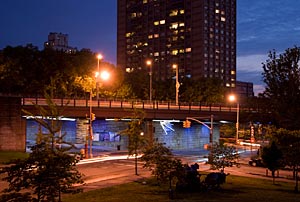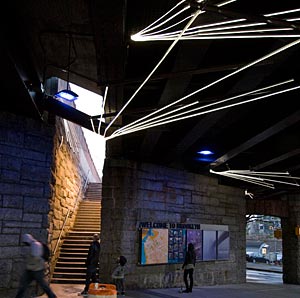George H. Miller, FAIA, has been chosen to serve as president of the American Institute of Architects in 2010. Miller, a partner at New York-based Pei Cobb Freed & Partners Architects, was elected by AIA delegates during the institute’s national convention in Boston last week. He is the first New York City architect to hold the top AIA post in more than three decades, since the late Max Urbahn was president in 1971, according to an article in The Architect’s Newspaper. A Berlin native, Miller grew up in the U.S. and received his B. Arch from Pennsylvania State University in 1973. During his 33-year tenure at Pei Cobb Freed, he has worked on many large projects such as the Hyatt Center in Chicago (2005), the National Constitution Center in Philadelphia (2003), and the Myerson Symphony Center in Dallas (1989). Miller presided over the AIA New York chapter in 2003 and currently is the AIA’s vice president; he will serve as AIA first vice president in 2009, according to the AIA. Other election results include: Walter J. Hainsfurther, AIA, and Pamela J. Loeffelman, FAIA, were chosen to serve two-year vice presidential terms beginning in December 2008; Stephen K. Loos, AIA, was elected to serve a two-year term as secretary, also starting in December 2008.


Photo courtesy Linnaea Tillett and Karin Tehve
Manhattan’s largest undeveloped site, the Hudson Rail Yards, might finally be transformed into an office and residential complex. On Thursday, New York’s Metropolitan Transit Authority (MTA) unanimously approved a deal with Related Companies and its partner Goldman Sachs to develop the 26-acre parcel, located on the west side of Midtown, near Pennsylvania Station. The developer’s $15 billion proposal calls for office towers, residential buildings and a park, all to be built in the air space over a labyrinth of railroad tracks. This is not the first deal the MTA has reached with a developer: In March, Tishman Speyer won the rights to develop the site using a scheme designed by architect Helmut Jahn and landscape architect Peter Walker. That deal fizzled earlier this month. According to an article in The New York Times, the “enormously complicated” project will take more than a decade to complete. “Before the first building can be erected,” the article states, “a developer must build a platform, foundations and columns over an operating rail yard. Construction cannot interfere with the trains.” While Related Companies has not announced whether it’s hired an architect, a project rendering is available on the developer’s Web site.
In other New York news, the iconic Brooklyn Bridge turns 125 this week. The 6,000-foot-long suspension bridge, which opened on May 24, 1883, cost $15 million and took 13 years to construct. According to an Associated Press article, the landmark structure “claimed several lives, including that of its celebrated designer, John Roebling.” The civil engineer reportedly died from a tetanus infection resulting from an injury he sustained while on the construction site; his son, Washington Roebling, took over the project. To commemorate the bridge’s anniversary, the city is offering an array of events over the Memorial Day holiday weekend, including film showings, concerts, walking tours and fireworks. In addition, designers Linnaea Tillett and Karin Tehve were commissioned to create a permanent lighting installation for the bridge’s underpass and pedestrian entrance in DUMBO, a Brooklyn neighborhood. “This Way,” as the project is called, uses LED lights, mounted with steel and aluminum supports, and fiber optic technology to illuminate a dark and foreboding area. “We transformed a bad-feeling place that people hurried through nervously into an environment where visitors and residents stop, look, gather, and talk to each other,” explains Tillet. The NYC Department of Cultural Affairs and the DUMBO Business Improvement District commissioned the project, which was unveiled on Wednesday. Tillet is principal of Brooklyn-based Tillett Lighting Design, founded in 1983. Tehve is principal of KT3D, an architecture studio in NYC.

Post a comment to this article
Report Abusive Comment